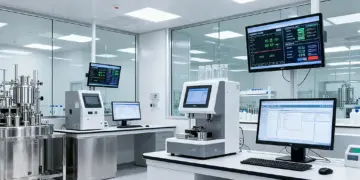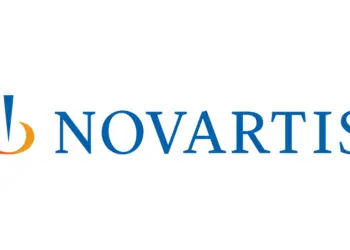Eli Lilly and Company has revealed plans to construct what it calls the most powerful supercomputer ever built and operated by a pharmaceutical company, developed in collaboration with NVIDIA. This new computing system will drive what the company describes as an “AI factory,” a purpose-built infrastructure designed to handle the full lifecycle of artificial intelligence from data collection and training to model optimization and large-scale inference.
“Lilly’s mission is to make life better for people around the world, and today that requires excellence not just in science but also in technology,” said Diogo Rau, executive vice president and chief information and digital officer at Lilly. “I don’t believe any other company in our industry is doing what we do at this scale. As a 150-year-old medicine company, one of our most powerful assets is decades of data. With purpose-built AI models and AI, we can set a new scientific standard that accelerates innovation to deliver medicines to more patients, faster.”
The new supercomputer for drug research will be the world’s first NVIDIA DGX SuperPOD equipped with DGX B300 systems. It incorporates more than 1,000 B300 GPUs operating on a unified high-speed network that connects computing, storage, and supporting systems on a single communication framework.
The setup is meant to change the way Lilly’s scientists handle large-scale research, making it easier to test and refine AI models quickly. This supercomputer for drug research will let them run experiments across millions of data points and open up more possibilities for discovering new drugs. Proprietary AI models will also be made available through Lilly TuneLab, a federated AI/ML drug discovery platform intended to enhance collaboration within the biopharma sector. TuneLab’s offerings will continue to evolve with additional tools and selected NVIDIA Clara open-source models.
Beyond early-stage research, Lilly intends to use the supercomputer to shorten development timelines and accelerate delivery of new treatments. AI agents will assist researchers with reasoning, planning, and collaboration across digital and physical spaces. Advanced medical imaging will provide deeper insight into disease mechanisms and support the creation of new biomarkers for personalized medicine. In manufacturing, digital twins and NVIDIA’s robotic technologies will help streamline production processes, improving efficiency and reducing downtime.
“The AI industrial revolution will have its most profound impact on medicine, transforming how we understand biology,” said Kimberly Powell, vice president of health care at NVIDIA. “Modern AI factories are becoming the new instrument of science — enabling the shift from trial-and-error discovery to a more intentional design of medicines. With its deep scientific heritage and commitment to innovation, Lilly stands as a global leader at the forefront of this new era of medical discovery.”
“Lilly is shifting from using AI as a tool to embracing it as a scientific collaborator,” added Thomas Fuchs, senior vice president and chief AI officer at Lilly. “By embedding intelligence into every layer of our workflows, we’re opening the door to a new kind of enterprise: one that learns, adapts and improves with every data point. This isn’t just about speed, but rather interrogating biology at scale, deepening our understanding of disease and translating that knowledge into meaningful advances for people served by Lilly medicines as well as the broader life sciences ecosystem.”
Aligned with the company’s sustainability goals, including achieving carbon neutrality by 2030, the supercomputer will operate entirely on renewable electricity within existing Lilly facilities. It will also utilize the company’s chilled water system for efficient liquid cooling. Lilly will present further details of its “Enterprise-Scale AI for Drug Discovery: Strategy, Infrastructure and Outcomes,” at NVIDIA’s AI conference GTC in Washington, D.C.

















